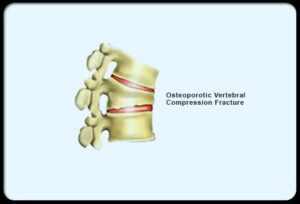Yoga Therapy Healing
(Experience Healing Through Yoga, Reduce Suffering, Embracing Wellness & Healthy Aging Togather)

Embark on Your Healing Journey
We invite you to embark on this transformative journey of Yoga Therapy Healing, where you’ll discover a path to holistic well-being that can help you lead a healthier, more balanced, and fulfilling life. Whether you’re seeking relief from physical discomfort or seeking inner peace and mental clarity, yoga therapy offers a powerful tool for healing and self-discovery.
Join our immersive program to gain a deeper understanding of yoga therapy, learn effective techniques, and experience the profound benefits it can bring to your life. Your path to wellness begins here.
Definition of Yoga Therapy . . .
Yoga therapy is a holistic approach to healing and well-being that utilizes the principles and practices of yoga to address specific physical, mental, emotional, and even spiritual health concerns. It is a therapeutic modality that involves the application of yoga techniques, including asana (physical postures), pranayama (breath control), meditation, and mindfulness, tailored to an individual’s unique needs and health goals. Yoga therapy is often practiced under the guidance of a qualified yoga therapist or instructor who has specialized training in adapting yoga practices to meet the therapeutic needs of the individual.
Principles of Yoga Therapy
Yoga therapy recognizes that each person is unique, and their health concerns are specific to their body, mind, and circumstances. Therefore, the practice is highly individualized, with a focus on tailoring yoga techniques to suit the individual's needs, abilities, and goals.
Yoga therapy takes a holistic approach, considering the interconnectedness of the physical, mental, emotional, and spiritual aspects of a person's life. It aims to promote balance and harmony in all these dimensions to achieve overall well-being.
Central to yoga therapy is the understanding that the mind and body are intimately linked. Physical ailments can often have mental and emotional components, and vice versa. Yoga therapy seeks to address these connections to promote healing.
Yoga therapy empowers individuals to take an active role in their own healing process. It teaches self-awareness, self-regulation, and self-care, enabling individuals to make positive changes in their health and lifestyle.
Yoga therapy generally employs non-invasive and natural methods to promote health and healing. It often integrates techniques such as gentle movement, breath work, meditation, and lifestyle modifications to encourage wellness.
Unlike quick-fix approaches, yoga therapy focuses on long-term well-being and prevention. It helps individuals develop sustainable practices that can lead to lasting improvements in their health and quality of life.
While yoga therapy can be a standalone approach for some health concerns, it is often used as a complementary therapy alongside conventional medical treatment. It can enhance the effectiveness of medical interventions and reduce the side effects of certain treatments.
Yoga therapy is increasingly being supported by scientific research, which helps validate its effectiveness in addressing various health conditions. Evidence-based yoga therapy programs are designed with a strong foundation in research and clinical experience.
Government of India Department of AYUSH Qualified yoga therapists adhere to ethical standards, respecting the dignity, privacy, and autonomy of their clients. They maintain a professional and compassionate approach to therapy.
Both yoga therapists and clients are encouraged to engage in ongoing learning and self-improvement. Yoga therapy is an evolving field, and staying updated with the latest developments is essential for providing and receiving the best care.
In essence, yoga therapy combines the ancient wisdom of yoga with modern healthcare principles to promote healing, balance, and well-being on all levels of the individual’s being, making it a valuable tool in the realm of holistic health and wellness.
Yoga therapy and regular yoga practice share common roots in yoga philosophy and techniques, but they serve different purposes and are applied in distinct ways. Here’s a breakdown of the key differences between the two . . .
- Purpose and Goal:
- Regular Yoga Practice: Regular yoga practice, often referred to as yoga asana or yoga posture practice, focuses on physical fitness, flexibility, strength, balance, and relaxation. While it can have numerous mental and emotional benefits, its primary goal is usually the maintenance of physical health and well-being. It may also have spiritual or philosophical aspects, but these vary widely depending on the style of yoga.
- Yoga Therapy: Yoga therapy, on the other hand, is a therapeutic modality with the primary goal of addressing specific health concerns, whether they are physical, mental, emotional, or even spiritual. The aim is to promote healing, alleviate symptoms, and improve overall well-being. It uses yoga practices as a means to achieve these therapeutic goals.
- Individualization:
- Regular Yoga Practice: In group yoga classes or self-guided practice, the focus is often on general sequences of yoga postures that are designed to benefit a broad range of people. While instructors may offer modifications, the practice is generally not highly individualized.
- Yoga Therapy: Yoga therapy is highly individualized. A qualified yoga therapist assesses the client’s unique needs, health conditions, and goals and tailors yoga practices to address those specific concerns. This individualization makes it a powerful tool for addressing health issues.
- Training and Certification:
- Regular Yoga Practice: Yoga instructors in group classes typically have a yoga teacher training certification, which focuses on teaching yoga asana, philosophy, and basic alignment. They may not have specialized training in addressing specific health conditions.
- Yoga Therapy: Yoga therapists undergo additional training and certification beyond regular yoga teacher training. They receive specialized education in anatomy, physiology, psychology, and therapeutic techniques. This training equips them to work with individuals who have health challenges and to adapt yoga practices accordingly.
- Context:
- Regular Yoga Practice: Regular yoga practice is often performed in group settings or at home, emphasizing a routine practice for overall well-being. It is accessible to a wide range of individuals and can be a preventive measure for maintaining health.
- Yoga Therapy: Yoga therapy is typically conducted on a one-on-one basis or in small, specialized groups. It is intended for individuals with specific health concerns or conditions, such as chronic pain, anxiety, depression, or physical injuries.
- Use of Props and Modifications:
- Regular Yoga Practice: While props and modifications can be used in regular yoga classes, they are generally employed to enhance the practice rather than to address specific therapeutic needs.
- Yoga Therapy: Props and modifications are frequently used in yoga therapy to adapt postures and practices for individuals with physical limitations, injuries, or health conditions. They are integral to the therapeutic approach.
- Integration with Conventional Medicine:
- Regular Yoga Practice: While regular yoga practice can complement conventional medicine and promote overall health, it is not typically integrated into a formal healthcare plan.
- Yoga Therapy: Yoga therapy is often used as a complementary therapy alongside conventional medical treatment. It can enhance the effectiveness of medical interventions and may be recommended by healthcare professionals for specific health conditions.
In summary, the main difference between yoga therapy and regular yoga practice is their purpose and approach. Regular yoga practice is primarily aimed at general physical fitness and well-being, while yoga therapy is a specialized and individualized approach focused on addressing specific health concerns and promoting healing. Both have their unique benefits and applications, and individuals may choose one or both based on their needs and goals.
Benefits of Yoga Therapy Yoga therapy offers a wide range of physical, mental, and emotional benefits. Here are some of the key advantages:
Physical Benefits:
- Improved Flexibility: Regular yoga therapy can enhance flexibility by gradually stretching and lengthening muscles and improving joint mobility.
- Strength Building: Many yoga therapy practices involve weight-bearing postures and movements that help build muscle strength, especially in the core, legs, and upper body.
- Pain Management: Yoga therapy can be effective in managing chronic pain conditions, such as lower back pain, arthritis, and migraines, by promoting relaxation and reducing muscle tension.
- Enhanced Balance and Coordination: Yoga therapy incorporates balance exercises, which can improve coordination and stability, reducing the risk of falls, especially in older adults.
- Posture Correction: Through awareness of body alignment and posture, yoga therapy helps individuals correct poor postural habits, reducing the risk of musculoskeletal issues.
- Breath Awareness: Yoga therapy emphasizes proper breathing techniques, which can improve lung capacity, oxygenate the body, and promote relaxation.
- Cardiovascular Health: Certain yoga practices, such as pranayama (breath control) and gentle asanas, can help lower blood pressure, reduce stress, and improve overall heart health.
Mental Benefits:
- Stress Reduction: Yoga therapy is renowned for its ability to reduce stress levels by activating the parasympathetic nervous system, leading to a state of relaxation and calm.
- Anxiety and Depression Management: Mindfulness practices and breath work in yoga therapy can help individuals manage symptoms of anxiety and depression, promoting emotional well-being.
- Enhanced Cognitive Function: Regular yoga therapy has been shown to improve cognitive functions such as memory, attention, and concentration.
- Better Sleep: Yoga therapy can alleviate sleep disturbances and improve sleep quality, helping individuals achieve more restful and rejuvenating sleep.
- Emotional Resilience: Yoga therapy teaches emotional regulation techniques that can enhance an individual’s ability to cope with life’s challenges and reduce emotional reactivity.
Emotional Benefits:
- Self-awareness and Self-acceptance: Yoga therapy encourages individuals to connect with their inner selves, fostering self-awareness and self-acceptance.
- Emotional Release: Yoga therapy can provide a safe space for individuals to release and process pent-up emotions, promoting emotional healing.
- Improved Relationships: Through increased self-awareness and emotional regulation, yoga therapy can lead to healthier relationships and better communication with others.
Conditions That Can Be Addressed with Yoga Therapy






Yoga therapy can be beneficial for a wide range of health conditions, including but not limited to:
- Chronic Pain: Arthritis, back pain, fibromyalgia, and other chronic pain conditions can often be managed and alleviated through yoga therapy.
- Stress and Anxiety Disorders: Yoga therapy provides tools to reduce stress and manage anxiety disorders such as generalized anxiety disorder and panic disorder.
- Depression: Yoga therapy can be a complementary approach to managing depression by promoting relaxation and improving mood.
- Post-Traumatic Stress Disorder (PTSD): Yoga therapy’s mindfulness and relaxation techniques can be helpful in reducing symptoms of PTSD.
- Cardiovascular Conditions: High blood pressure, heart disease, and other cardiovascular issues can benefit from yoga therapy’s focus on relaxation and stress reduction.
- Respiratory Conditions: Asthma and chronic obstructive pulmonary disease (COPD) patients can improve their lung function and breathing with specific yoga therapy practices.
- Digestive Disorders: Irritable bowel syndrome (IBS) and other digestive disorders can see symptom relief through yoga therapy practices targeting the gut-brain connection.
- Mental Health Conditions: Yoga therapy can be a valuable addition to the treatment of various mental health conditions, including bipolar disorder and schizophrenia.
- Neurological Conditions: Conditions like multiple sclerosis and Parkinson’s disease may benefit from yoga therapy’s focus on balance, coordination, and relaxation.
- Women’s Health: Yoga therapy can address women’s health issues such as menstrual discomfort, PCOD, menopause symptoms, and fertility concerns.
It's important to note that yoga therapy should be practiced under the guidance of a qualified yoga therapist, especially when addressing specific health conditions. A trained therapist can create an individualized program that is safe and effective for your needs and goals.
Discover inner peace and healing at the Therapy Healing by Yogism Yoga Institute. Embrace balance, serenity, and vitality through the ancient wisdom of yoga. Join us on a transformative journey to unlock your true potential. Experience wellness, mind-body harmony, and lasting joy. Start your healing journey today with us.
Ready to embark on your healing journey through yoga? Contact us now to begin your transformative experience. Our expert instructors are here to guide you towards inner peace and holistic well-being. Don’t wait, take the first step towards a healthier, happier you. Reach out to Therapy Healing by Yogism Yoga Institute today, and let’s start your healing journey together.
our TESTIMONIALS
-
 Alpana Adsul
Alpana AdsulThank You Yogism for this Yoga Teacher Training Certification Course. It was an awesome experience. Special thanks to Sunita mam & Sunil Sir for your guidance & support. Because of you only I am able to complete today's exam. Also special Thanks for all other teachers for giving us psychology(CBT),ayurveda and diet knowledge. The syllabus of this training is designed very well. Really proud that I am a part of this YOGISM family now... Thanks a lot
Read more -
 Harshal Kamble
Harshal KambleI completed my Yoga teacher training with Yogism Pune. Very good and detailed ancient text oriented Course. Also course gives you knowledge about spiritual aspect of Yoga.
Read more -
 अनुराधा गुप्ते
अनुराधा गुप्तेI did the Yoga Teacher Training course from Yogism. The course work including theory and practicals were handled very well by the teachers Pawar Sir and Madam. Especially, the theory part includes learning from original Sanskrit scriptures like Patanjali Yog Sutra, Hathyogpradipika and Gherand Samhita. Other theory parts including Ayurvedic and modern anatomy, nutrition, diet are also taught with great clarity.
The practicals part of Yogasanas emphasizes correct form and posture for each of the asanas. Apart from this, teaching yoga from the basics is demonstrated from the beginning. Basic shudhi kriyas which are a prelude to Pranayam are also taught.
The course is comprehensive and covers all aspects of Yoga teaching in a holistic manner. Those interested in teaching Yoga should definitely opt for this course at Yogism.Read more -
 Ujwala Jadhav
Ujwala JadhavTaking admission in Yoga Teacher Training Center,Yogism was right decision for me. The journey was very interested and smooth ofcourse only because of Sunita madam and sir. I feel that who ever wants to become yoga trainer or practice yoga for themselves should take admission in this center. This training covers not only yogasana but patanjali yog, CBT, nutrition, anatomy. On the top you will get moral support and motivation from both madam and sir . I feel that I have started my journey in yoga world. A big thank you to madam and sir.
Read more -
 शालिनी पाठक
शालिनी पाठकThe YTT by Yogism provided me with a very enriching experience not only on learning & environment, but also extended my interest in yoga. I enjoy every moment in the class. Teachers are very knowledgeable and skilled. In addition, they are very passionate and patient to teach, explain and demonstrate. I would highly recommend this class for anyone who is interested in enhancing their knowledge of yoga and wants to reach a higher level of yoga proficiency. This is the most suitable place to train to become a yoga teacher.
Special thanks to Sunil sir and Sunita ma'am for your very valuable training. I really enjoyed it, and appreciate it. Thank you so much for your assistance and guidance.Read more -
 सुजला पाटील गोवा
सुजला पाटील गोवाI have done yoga teachers training course from Yogism Yoga Institute Pune. And it was the best decision. Sunita Ma'am and Sunil sir both are really great teachers. The atmosphere or vibes inside the studio is really great and it makes us enjoy our learnings. My life changed in a better way aftr i started doing this course. They focuses not only on Asanas but also Ayurveda,diet, nutrition, psychology,etc and it helps a lot to understand things easily. Grateful❤️
Read more -
 Eaha Kulkarni
Eaha KulkarniI have done Teacher Training course from Yogism Institute, Pune. Needless to say it was the best decisions of my life. From the vibes of the institute to the teachings everything is outstanding. Sunita Ma’am and Sunil sir both are excellent and experienced teachers. They both compliment each other. All the teaching staff including Ayurved, Psychology and nutrition are too good. The confidence which you get after finishing this course is immense. There are visible internal and external changes in me after finishing this course. I am very blessed to meet amazing teachers and excellent team mates. Thank you so much for giving me the best experience. I highly recommend this institute if anyone wants to take their yoga journey ahead.
Read more -
 Susshtri Bagal
Susshtri BagalThank you sir and mam for everything. It was the life lessons and yoga asanas you taught me and made me practice which will remain with me for lifetime and I will be forever grateful to you for that. It's a best institute to learn Yoga at. Along with Yoga, Institute given me base of Ayurveda, psychology and Diet which will help me nourish my life completely. It's a wholesome package. I learnt here life science. Grateful and Gratitude
Read more -
 Bajarang Dhumal
Bajarang DhumalThis is the best place to complete yoga teacher training course. I am very greatful to be part of this great institute. Both sunil sir and suneeta ma'am is highly skilled, knowledgeable, very supportive and friendly.
Read more -
 Sushila Kolte
Sushila KolteDoing TTC at Yogism was a great learning experience for me. Yoga has helped me to heal mentally as well physically. TTC course at Yogism is a well designed and structured course which covers all the aspects of health, from yogasanas, diet, ayurveda to psychology. After a week from joining the class my sleeping habits got improved and Omkar Chanting played a major role in that. After attending the Psychology session, I have applied the "live in present" technique to the daily life and started to accept things slowly. As I became more aware about my personality after Ayurveda and diet sessions respectively. I started eating healthy and a regular yoga practice helped me to plan my days better, I am more focused in life now, my periods are regular on time, as well as I have lost the stubborn pregnancy fat too. So overall doing a Teachers Training Course under Sunil Sir and Sunita Ma'am was the best decision I have ever made. At Yogism I have learnt that Yoga is not only about doing Aasana, it's start of a beautiful journey and a way of life which we all should adopt to lead a happy and healthy life, and I wish I had known this sooner. But as they say "you are never too old to start something new"! Thank you very much Sir and Ma'am for your guidance and time.
Read more -
 Megha Patil
Megha PatilIt was wonderful to connect with Yogism Yoga Institute, Pune.
I am so grateful that both of you sir and madam you offered me your experience, knowledge, time and energy.
You both are wise and loving teacher’s, it was my pleasure to be your student and learned so many things with proper techniques and great knowledge.
You both are role models in front of me to whom I like to follow throughout my yoga journey not only Yogasana as exercise but for Yoga as a life changing tool.
This yoga journey helped me for my physical as well as mental fitness.
I recommend Yogism to each and every individual who is looking for Authentic Indian Yoga. Thanks.Read more -
 Priya Kalyankar
Priya KalyankarYoga Teachers training Course with Yogism has been a life changing experience where I have learned a lot. I was associated with The course was very well thought out and had covered almost all the aspects of yoga including asanas, pranayamas, and their benefits and contraindications as well as the theory on the human body and its functioning,diet, Ayurveda, psychology..etc The experts were very helpful and knowledgeable.This course has been a life changing experience for me all together.
Read more
